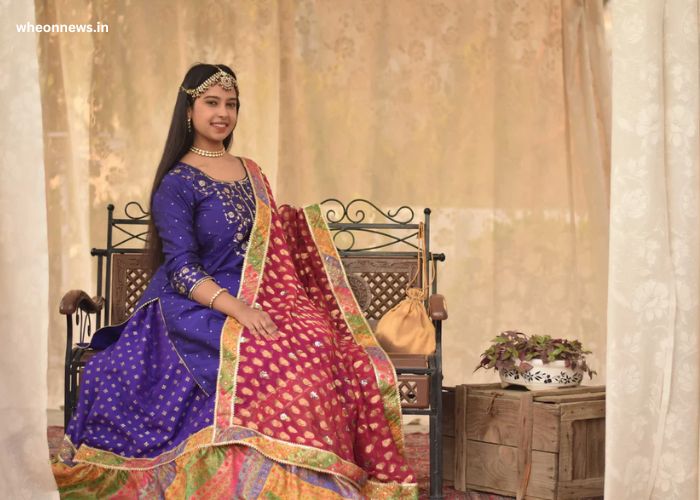
Traditional dresses for girls reflect the beauty and heritage of different cultures worldwide. These outfits are worn during festivals, weddings, and cultural events. They come in different fabrics, colors, and designs, each symbolizing history and tradition. Understanding the importance of traditional attire helps keep cultural values alive while embracing fashion.
Key Points:
- Traditional dresses showcase cultural identity and history.
- These outfits are worn on special occasions like festivals and weddings.
- Various countries have unique styles of traditional dresses for girls.
What Are the Most Popular Traditional Dresses for Girls?
Traditional dresses vary across countries, reflecting their unique history and customs. Here are some famous traditional dresses from around the world:
- Kimono (Japan) – A long robe with wide sleeves, worn with an obi belt.
- Lehenga Choli (India) – A flared skirt paired with a blouse and dupatta.
- Hanbok (Korea) – A vibrant-colored outfit with a jeogori (jacket) and chima (skirt).
- Dirndl (Germany) – A dress with a tight bodice, full skirt, and apron.
- Cheongsam (China) – A fitted silk dress with a high collar and side slits.
These dresses are not only beautiful but also deeply rooted in cultural heritage.
Comparison of Popular Traditional Dresses:
| Dress Name | Country | Features |
|---|---|---|
| Kimono | Japan | Long robe, wide sleeves, obi belt |
| Lehenga Choli | India | Flared skirt, blouse, dupatta |
| Hanbok | Korea | Jeogori (jacket), chima (skirt) |
| Dirndl | Germany | Bodice, full skirt, apron |
| Cheongsam | China | Fitted silk dress, high collar |
Note: Always respect cultural traditions when wearing traditional dresses.
Why Is Traditional Dress Important for Girls?
Traditional dresses are more than just clothes; they hold cultural significance. Here’s why they are important:
- Cultural Identity – These dresses help girls connect with their roots and preserve traditions.
- Special Occasion Wear – Many traditional dresses are worn during weddings, religious ceremonies, and cultural festivals.
- Handcrafted Beauty – Many traditional dresses feature intricate embroidery, beadwork, and special fabrics, showcasing skilled craftsmanship.
For example, Indian bridal lehengas are hand-stitched with gold embroidery, while African dresses like the Dashiki have bold patterns and bright colors.
How to Style Traditional Dresses for Modern Occasions?
While traditional dresses are beautiful, they can also be styled in modern ways. Here are some styling tips:
- Mix and Match – Pair traditional skirts with modern tops or vice versa.
- Accessorize Well – Use traditional jewelry like bangles, earrings, and necklaces.
- Footwear Matters – Choose the right footwear, such as embroidered juttis with lehengas or heeled sandals with cheongsams.
Modern Styling Comparison:
| Style | Traditional | Modern Twist |
| Kimono | Worn as a full set | Used as a stylish robe over casual outfits |
| Hanbok | Classic, loose fit | Modified into a slimmer silhouette |
| Lehenga | Heavy embroidery | Lighter fabrics, pastel shades |
Reminder: Traditional dresses can be customized while keeping their cultural essence intact.
Where to Buy Traditional Dresses for Girls?
Traditional dresses can be found in different stores and online platforms. Some options include:
- Local Cultural Markets – Best for authentic and handcrafted designs.
- Online Retailers – Websites like Amazon, Etsy, and culture-specific stores sell traditional dresses.
- Custom Tailoring – Getting a dress stitched by a tailor ensures a perfect fit and personal touch.
For example, buying a lehenga from an Indian boutique ensures authenticity, while purchasing a hanbok from a Korean online store offers a variety of styles.
Conclusion
Traditional dresses for girls are more than fashion; they represent cultural heritage and traditions. From Japan’s kimono to India’s lehenga, these outfits hold deep meaning. While they can be styled with modern elements, it’s important to respect their cultural significance. Whether worn for a festival or a wedding, these dresses make every occasion special.
FAQs
- What Is the Most Popular Traditional Dress for Girls? The most popular dresses include the kimono, lehenga choli, hanbok, cheongsam, and dirndl.
- Can Traditional Dresses Be Worn Casually? Yes, many traditional dresses can be styled for casual wear by mixing them with modern clothing.
- Where Can I Buy Authentic Traditional Dresses? You can buy them from cultural markets, online stores, or custom tailors.
- How Can I Maintain a Traditional Dress? Follow care instructions, such as dry cleaning for delicate fabrics and proper storage.
- Are Traditional Dresses Expensive? Prices vary; handcrafted dresses are more expensive, while simpler versions are budget-friendly.
